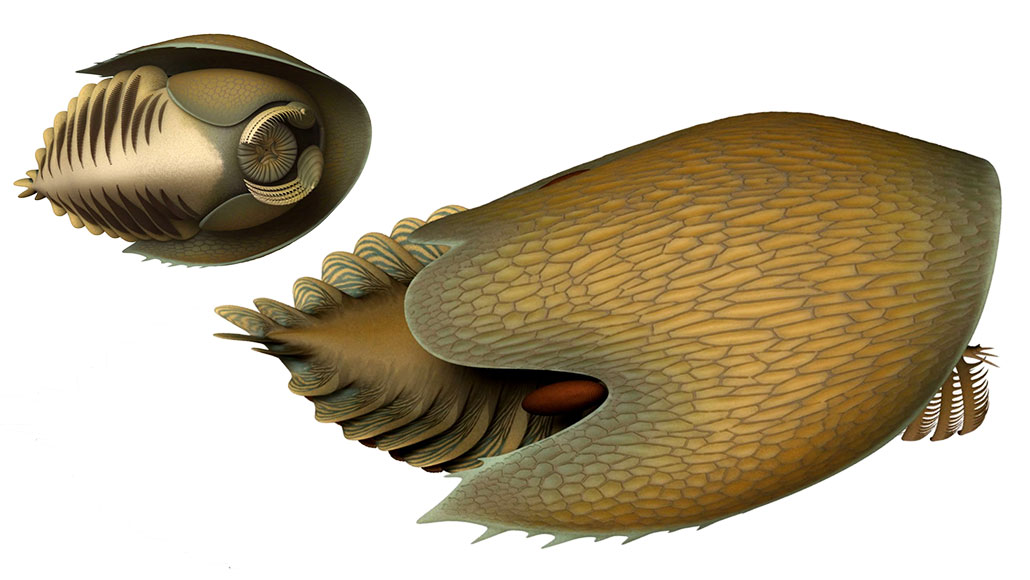This newfound predator may have terrorized the Cambrian seafloor
With rakelike claws and a toothy mouth, it could snag prey even under the sand

BOTTOM FEEDER With a spaceship-shaped carapace, rakelike claws and a round tooth-filled mouth, Cambroraster falcatus (shown in an artist’s rendition) hunted for food along the seafloor.
Lars Fields © Royal Ontario Museum